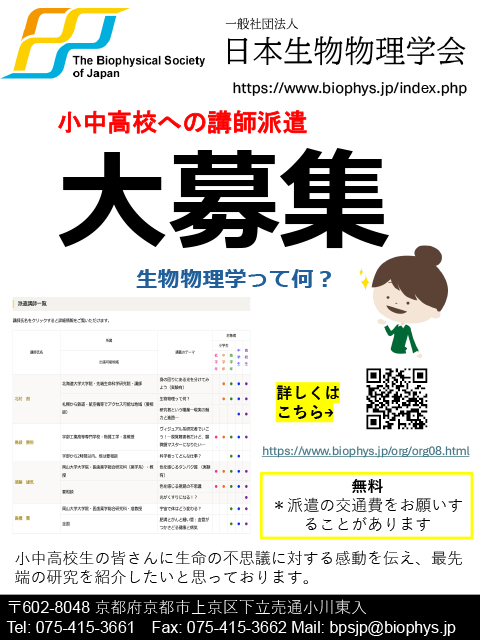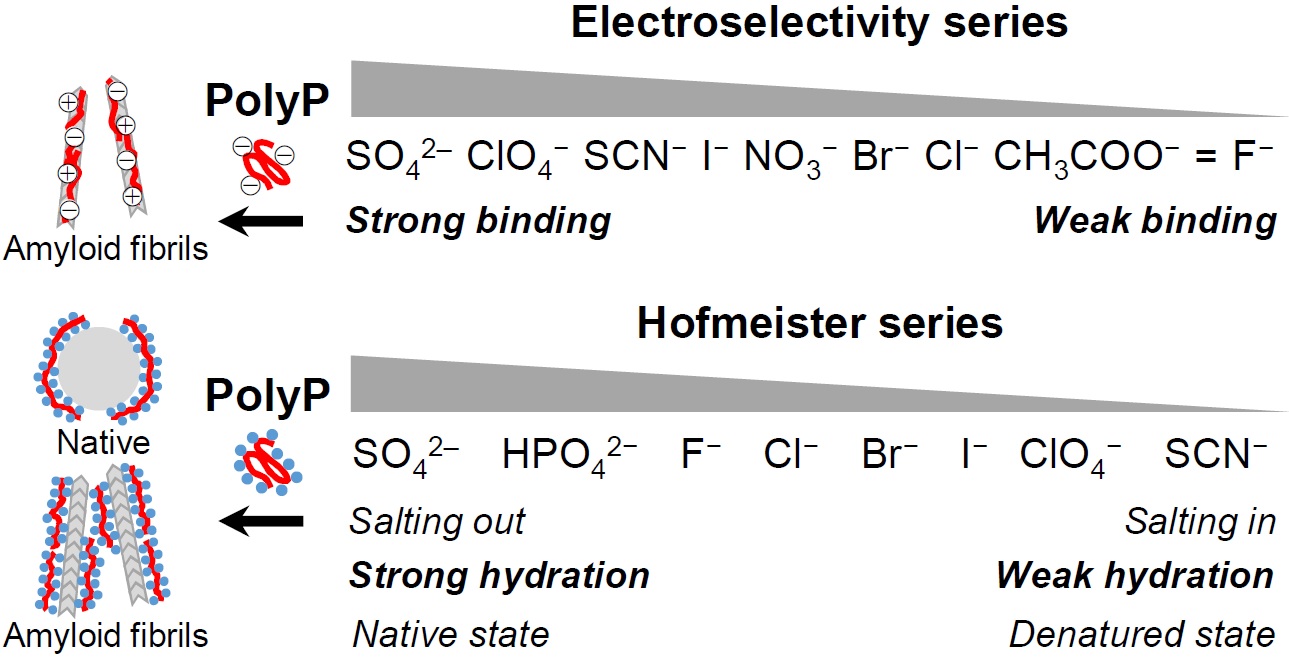男女共同参画学協会連絡会
支援企業による広告記事
- ソーラボジャパン株式会社
- CAD を使って光学装置を設計してみよう
- 「生物物理」2025年10月号
- ソーラボジャパン株式会社
- 次世代2光子顕微鏡―小型化がもたらす新たな可能性
- 「生物物理」2024年10月号
- ソーラボジャパン株式会社
- サイエンティフィックカメラと周辺機器の同期
- 「生物物理」2023年10月号
- ソーラボジャパン株式会社
- 顕微鏡のリノベーション ~ 顕微鏡ポートを活用した光学系の導入
- 「生物物理」2022年12月号
「Biophysics and Physicobiology」に Keiichi Yamaguchi, Kichitaro Nakajima, Yuji Goto による "Mechanisms of polyphosphate-induced amyloid fibril formation triggered by breakdown of supersaturation" をJ-STAGEの早期公開版として掲載
2023年03月02日 学会誌
日本生物物理学会欧文誌[Biophysics and Physicobiology]に以下の論文が早期公開されました。
Keiichi Yamaguchi, Kichitaro Nakajima, Yuji Goto
"Mechanisms of polyphosphate-induced amyloid fibril formation triggered by breakdown of supersaturation"
URL:https://doi.org/10.2142/biophysico.bppb-v20.0013
- Abstract
- Much effort has been devoted to elucidate mechanisms of amyloid fibril formation using various kinds of additives, such as salts, metals, detergents, and biopolymers. Here, we review the effects of additives with a focus on polyphosphate (polyP) on amyloid fibril formation of β2-microblobulin (β2m) and α-synuclein (αSyn). PolyP, consisting of up to 1,000 phosphoanhydride bond-linked phosphate monomers, is one of the most ancient, enigmatic, and negatively charged molecules in biology. Amyloid fibril formation of both β2m and αSyn could be accelerated by counter anion-binding and preferential hydration at relatively lower and higher concentrations of polyP, respectively, depending on the chain length of polyP. These bimodal concentration-dependent effects were also observed in salt- and heparin-induced amyloid fibril formation, indicating the generality of bimodal effects. We also address the effects of detergents, alcohols, and isoelectric point precipitation on amyloid fibril formation, in comparison with the effects of salts. Because polyP is present all around us, from cellular components to food additives, clarifying its effects and consequent biological roles will be important to further advance our understanding of amyloid fibrils. This review article is an extended version of the Japanese article, Linking Protein Folding to Amyloid Formation, published in SEIBUTSU BUTSURI Vol. 61, p.358-365 (2021).
URL: https://doi.org/10.2142/biophysico.bppb-v20.0013







